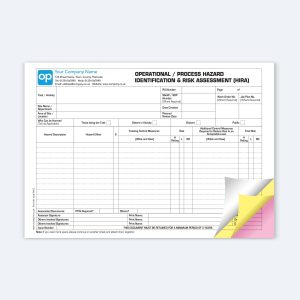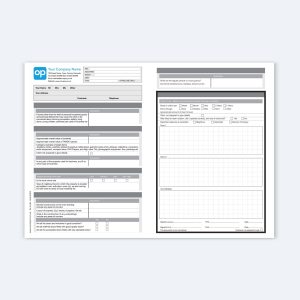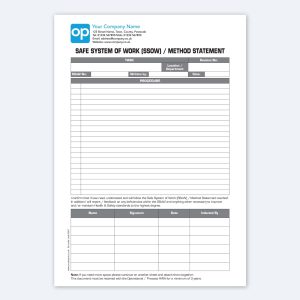Risk Assessment Templates
Business forms that are designed to work for businesses in identifying potential hazards and assessing the associated risks.
Risk Assessment Forms
Can't find what you're looking for?
Risk Assessment Templates
Hazard Identification and Risk Assessment (HIRA) is a structured process used in various fields, including workplace safety, environmental management, and project planning, to identify potential hazards and assess the associated risks. The primary goal of HIRA is to proactively identify, evaluate, and mitigate risks to prevent accidents, injuries, damage, or harm to people, the environment, and assets.
The process typically involves the following steps:
- Hazard Identification: This step involves systematically identifying all potential hazards or sources of harm in a given context. Hazards can be physical (e.g., machinery, chemicals, electrical equipment), chemical (e.g., toxic substances), biological (e.g., pathogens), ergonomic (e.g., poor workstation design), and psychosocial (e.g., workplace stress or bullying).
- Risk Assessment: Once hazards are identified, a risk assessment is conducted to evaluate the likelihood and severity of harm associated with each hazard. This typically involves assigning numerical values or qualitative ratings to each hazard based on factors such as the probability of occurrence, potential consequences, and exposure levels.
- Risk Analysis: In this step, the results of the risk assessment are analysed to prioritise hazards and determine which risks are the most significant and require immediate attention. Risks are often categorised as low, moderate, high, or extreme based on their severity and likelihood.
- Risk Control Measures: After identifying high-risk hazards, control measures are developed and implemented to reduce or eliminate the risks. These measures can include engineering controls (e.g., safety barriers), administrative controls (e.g., safety policies and procedures), and personal protective equipment (PPE).
- Monitoring and Review: HIRA is an ongoing process, and it’s important to continuously monitor and review the effectiveness of the control measures in place. Regular audits, inspections, and incident reporting are essential to ensure that the risks remain under control.
- Documentation: Proper documentation of the HIRA process is important for regulatory compliance and for maintaining a record of hazards, risk assessments, control measures, and their effectiveness.
HIRA is a fundamental component of occupational health and safety management systems, and it helps organisations and individuals make informed decisions to create safer environments and reduce the likelihood of accidents and incidents. It is also applicable in various other domains where risk assessment and mitigation are critical, such as environmental impact assessments, industrial processes, and emergency response planning.
Trusted Supplier to UK Businesses
Expert Customer Service
Quality Guaranteed



